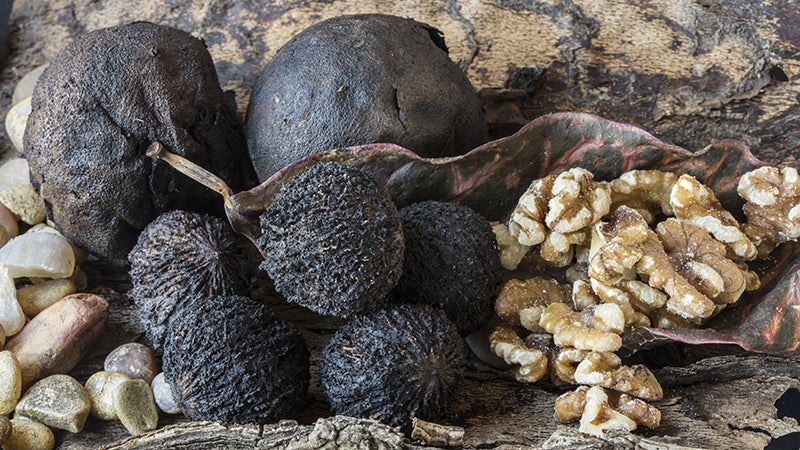Take time to crack a black walnut
Published 2:48 pm Monday, December 10, 2018

- Black walnuts have a bold and earthy flavor.
|
Getting your Trinity Audio player ready...
|
Kristi Hendricks
There is no better nut for healthy Christmas apple cakes than the oil-rich black walnut. Having a bold, earthy flavor, this walnut is the perfect match for spunky spices such as nutmeg, clove and cinnamon. You’ll find these bagged nuts at a princely price in area grocery stores. But if you’re fortunate, you’ll have a black walnut tree in your own landscape or located nearby where you can harvest the plentiful fruit in autumn for an assortment of holiday treats.
Not only is this tree prized for its tasty kernels, but the wood is also highly valued in the commercial industry for cabinetry, fine furniture and handsome gunstocks. The heartwood is heavy, hard, durable and chocolate-brown in color. Black walnut wood is considered the best furniture wood available from any indigenous American tree. And, yes, this tree is native to every Virginia county.
Mind you, the Juglans nigra isn’t street-friendly. Extra space is needed for planting this aromatic tree. First of all, this walnut can reach 100 feet at maturity. Secondly, as late spring wears on, yellow female flowers give way to those edible nuts. From that branch height, you don’t want these musky-smelling nut bombs falling into your neighbor’s lawn or on the unsuspecting heads of passersby.
While still on the tree, the immature nuts are enclosed in a fleshy, green hull. As they ripen, the nuts fall to the ground. The sturdy husks soon yellow then blacken as they rot away exposing the dark, ridged nut casings. This landscape debris will easily stain sneakers, sidewalks and decking.
If your interest is piqued, take note that juglone is exuded from all parts of the walnut tree. When landscape plants that are sensitive to this chemical are sited near or under this tree they tend to yellow, wilt and die. VCE publication 430-021 lists many such plants easily damaged by juglone and those that are tolerant.
Want to view a few iconic specimens of this tree before adding to your own naturalized habitat? The second largest of this tree species recorded in Virginia just happens to reside at the Colonial-era Fort Boykin. Another handsome example is located at Smith’s Fort Plantation serving to accent the historic manor house now decorated for the holidays by the Surry Garden Club.
Take time this holiday season to crack a black walnut. This family-friendly activity is character building for the New Year. Sit on a tree stump and use a hammer to break the hard nutshell against a cinderblock while taking care not to smash the valuable kernel. Don’t compost these sharp casings. Use a nut pick to pry the meat from the inner shell corridors. This treasured nut is worth the effort.
KRISTI HENDRICKS is a member of the Western Tidewater Master Gardeners. Contact her at GardenontheJames@yahoo.com.

